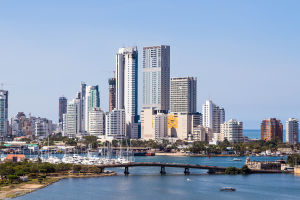Banff National Park is a wildlife enthusiast’s paradise, home to over 53 species of mammals and more than 300 bird species, ranging from grizzly bears and wolves to tiny pikas and marmots, the diversity of wildlife in the park reflects its varied landscapes.
If you’re hoping to catch sight of a massive elk or a soaring bald eagle, Banff is the right place but to make the most of your wildlife-spotting adventure, you’ll need to know where to go, when to visit, and how to capture stunning photos of these animals.
Banff National Park
1. What Will You Spot?
Banff is teeming with large and small animals alike. You’ll likely encounter grizzly and black bears during the warmer months, especially in areas like Lake Louise and Bow Valley Parkway. Moose and elk roam freely in the lower montane areas, while wolves, cougars, and bighorn sheep inhabit the park's more remote regions. Birdwatchers can look forward to seeing bald eagles, ospreys, and Clark’s nutcrackers, particularly around the Vermilion Lakes and Moraine Lake.
2. When to Go for the Best Sightings
Seasons:
- Spring (March-May): This is when animals, especially bears, start emerging from hibernation, making it an excellent time for bear sightings along hiking trails and roadways. Elk and deer can also be seen grazing in the valleys.
- Summer (June-August): Summer is prime time for spotting wildlife like moose, elk, and bighorn sheep. Birds, such as ospreys and bald eagles, are highly active around the park’s lakes.
- Fall (September-November): Fall is the rutting season for elk, which means you’ll have a good chance of seeing male elk locking antlers and engaging in fierce battles for mates. Deer and bears are also more visible as they prepare for winter.
- Winter (December-February): Winter is the best time to spot animals like snowshoe hares and bighorn sheep in their winter coats. Wolves are also more active in the colder months, often seen prowling the snowy backcountry.
Daytime:
Early morning and late afternoon are the best times to catch wildlife in action. Animals like bears, elk, and moose are more active at these times, especially in quiet, secluded areas. Bring a pair of binoculars and a camera with a telephoto lens to ensure you get a close-up view from a safe distance.
The Ultimate Wildlife Guide to the Canadian Rockies: Top 10 When/Where to Find Them
Insiders Travel Guide Canada
3. Where to Spot Wildlife
- Bow Valley Parkway: This scenic route is ideal for spotting grizzly and black bears, elk, and white-tailed deer. During the early morning or late afternoon, you might even catch a glimpse of a coyote or a herd of bighorn sheep grazing along the road.
- Icefields Parkway: Known for its breathtaking landscapes, this highway is a fantastic spot for spotting moose and caribou, particularly in the early morning. You may also see wolves and wolverines in the more remote areas of the park.
Bow Valley Parkway
Icefields Parkway
- Lake Minnewanka: This lake is popular for spotting elk, especially in the fall during rutting season. Birdwatchers will also love this area for its bald eagles and osprey.
- Vermilion Lakes: A great place for photographing waterfowl and other bird species, Vermilion Lakes is also a good spot to find beavers and muskrats near the water. You may catch an otter or two playing in the water.
Lake Minnewanka
Vermilion Lakes
Now you are ready to shoot some great photos and remember, for the best wildlife photography bring a camera with a good zoom lens (like a 200-400mm lens) to capture animals from a safe distance, shoot during the "golden hour" at dawn or dusk for the best light, and a telephoto lens helps you maintain a respectful distance while getting crisp, detailed shots.


